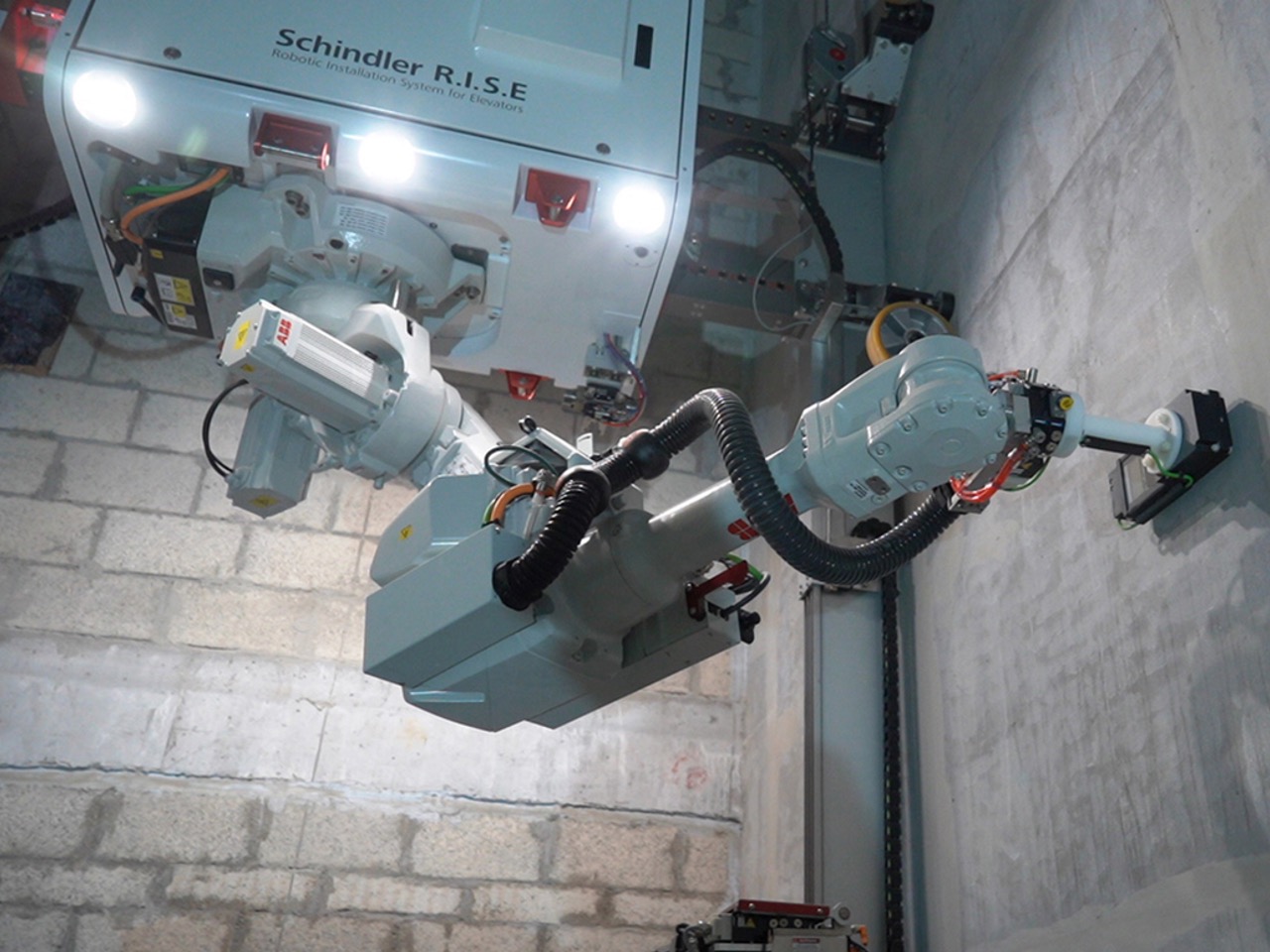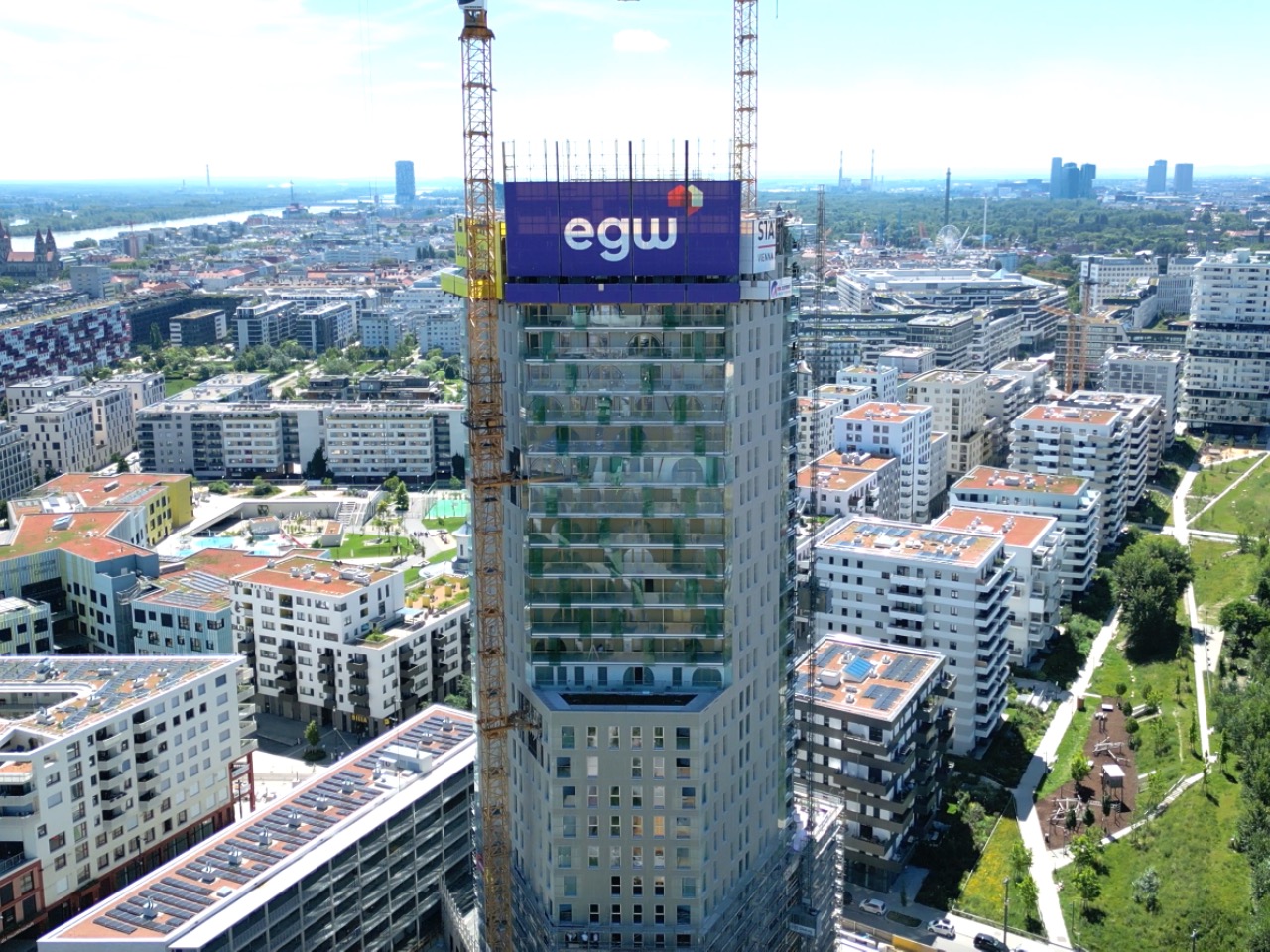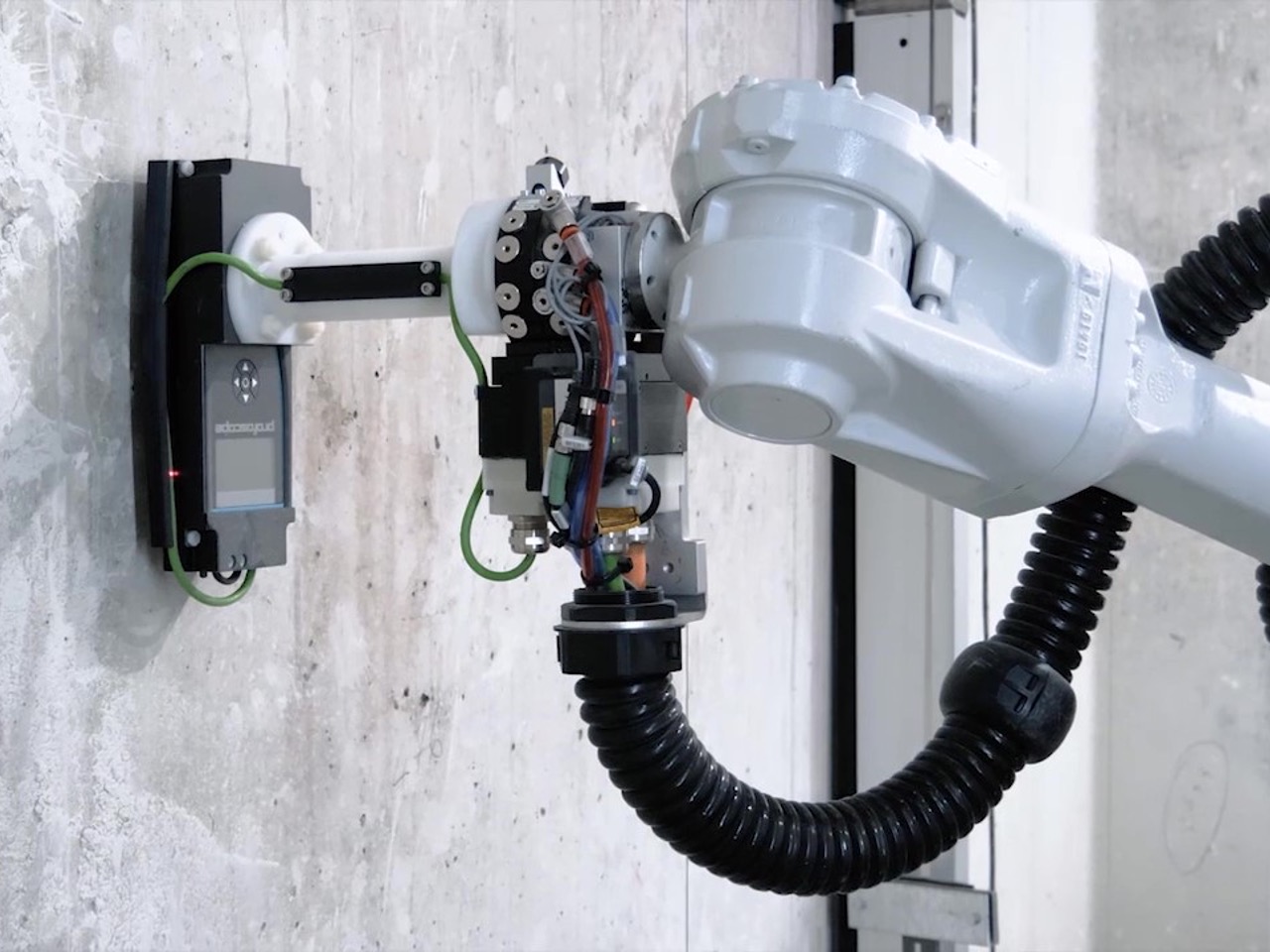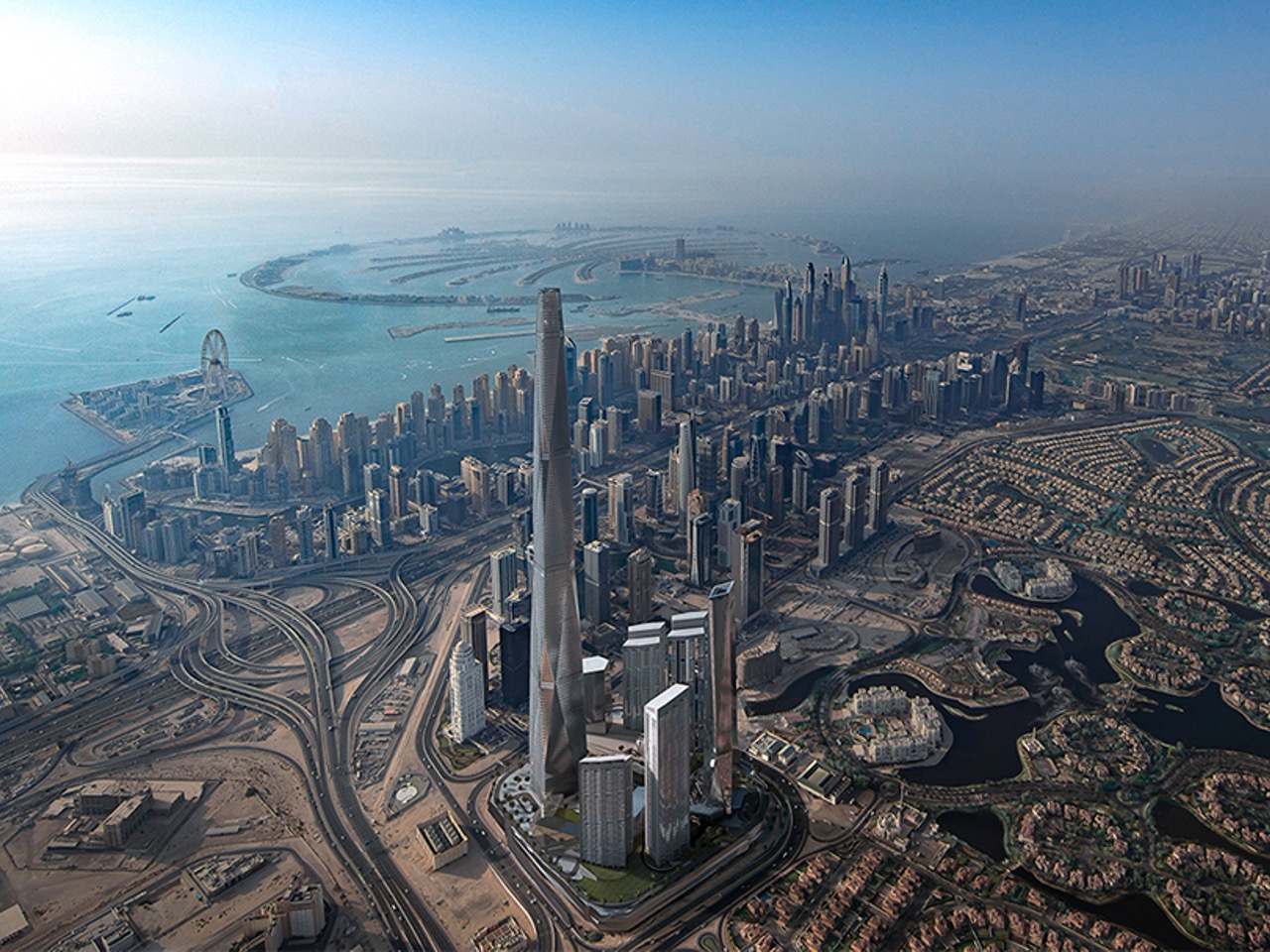This Construction Robot is Building Supertall Elevators
- Youtube Views 301,358 VIDEO VIEWS
This video and article contain paid promotion for Schindler.
LET'S face it: few feats of construction are more awe-inspiring than a skyscraper. Around the world these buildings tower over our cities: emerging from the context of their time, maximising floor area on site, pushing engineers to the max and standing as markers of our progress.
But they wouldn’t be viable without one very simple thing: the elevator. Think about it for a moment. You’re not going to want to live or work in a 90-storey building if that means taking 90 flights of stairs every day. These machines are what make our tall buildings actually work.
Now, that most critical of high-rise features is seeing some serious innovation with the arrival of robots – yes, robots – to help with the installation process.

Above: Schindler's robotic installation system for elevators, also known as R.I.S.E. Image courtesy of Schindler.
In recent years skyscraper construction has continued to grow. Concurrently, the construction industry has found itself under pressure to build in a more productive, efficient and sustainable way – and that's created fertile ground for a whole range of more innovative approaches.
Taller, faster and less impact on the environment really is the name of the game, and contractors are deploying all kinds of tricks to make that happen: from jump core systems and AI, to advanced 4D planning and the offsite manufacturing and prefabrication of components.
Elevators are of course a key feature of a high-rise build, but fitting them in any tower takes time. In simplified terms, the installation process involves fitting out an elevator shaft with rails, landing doors at each floor, a motor at the top of the shaft to move the elevator car and of course the car itself.
One project going through that process right now is the 100-metre Snow White Tower (Schneewittchen) in Vienna, Austria: a new residential development that’ll be home to some 800 people. It might not be a skyscraper (more on what qualifies here), but it certainly felt high enough as I rode the scaffold hoist 29 storey’s up the side of it.
It also seems taller because Vienna is a relatively low-rise city. There are only 15 buildings over 100 metres.

Above: The Snow White Tower under construction in Vienna, Austria. Image courtesy of Schindler / Arnaud Volery.
Here the shafts are 100-metres high and they need 942 anchor bolts fitting to install the elevators. That’s 942 holes to drill, and 942 bolts to set, across two shafts. Quite frankly it takes ages by hand and is prone to error - and that is where Ella comes in.
Ella is part of Schindler’s robot installation system for elevators or R.I.S.E – a new form of tech that could seriously shake-up the way we build our elevators. It works by autonomously climbing the inside of an elevator shaft, then taking accurate information from the project’s detailed design models to position and drill anchor bolts in a fast and efficient way. Installation teams then follow on and fit the rest of the elevator system.
Typically the industry average for fitting an elevator is about a week per floor. Project data varies, but Schindler claims that R.I.S.E helps to really cut that down: on a scheme in Sao Paulo, the approach reportedly shaved a full two weeks off the installation time.
It’s also much safer, taking workers out of a loud and dusty environment where the repetition of the drilling task can impact people’s health and bring on fatigue pretty quickly. Here that’s all left to the robot.
Schindler's R.I.S.E system does require someone on site to monitor the robot’s actions through a remote on-board camera, but other than that there’s no operator and the approach is completely autonomous.

Above: One of the Schindler R.I.S.E robots marking out a drilling position inside an elevator shaft. Image courtesy of Schindler.
Amazingly, Ella isn’t alone. It’s actually one of five R.I.S.E robots already working around the world. The others are Lea, Marie, Sarah, and Laura and they’ve helped build skyscrapers including Dubai’s 340-metre Uptown Tower, Brazil’s JK Square, and Warsaw’s Varso Tower.
In fact, the system is already about six years old and has been deployed on some 30 different projects, or “missions” as Schindler likes to call them, around the world.

Above: Schindler's R.I.S.E system has been deployed on site at Dubai's supertall Uptown Tower.
Of course seeing a robot like Ella on site might actually feel a bit unsettling for some people – and it’s important to recognise that the future will probably pair robots and humans alongside each other.
Robots can take over dangerous and repetitive tasks, freeing people up and helping to address the severe gap in skilled workers coming into construction. But hardly any experts predict a scenario where robots like this could replace construction workers altogether.
Over the years I have been fortunate enough to travel the world and see many construction sites, but what I witnessed on the ground in Vienna was genuinely impressive and speaks to the power of construction.
It shows just how innovative this industry can be and that its approach to technology has now largely matured from gimmicks to more compelling applications, backed by solid business cases. If this technology takes off, it could seriously change how we build skyscrapers around the world.
Learn more about Schindler's R.I.S.E system.
Video narrated and hosted by Fred Mills. Additional footage and images courtesy of Schindler. Drone footage courtesy of Schindler / Arnaud Volery.
We welcome you sharing our content to inspire others, but please be nice and play by our rules.








